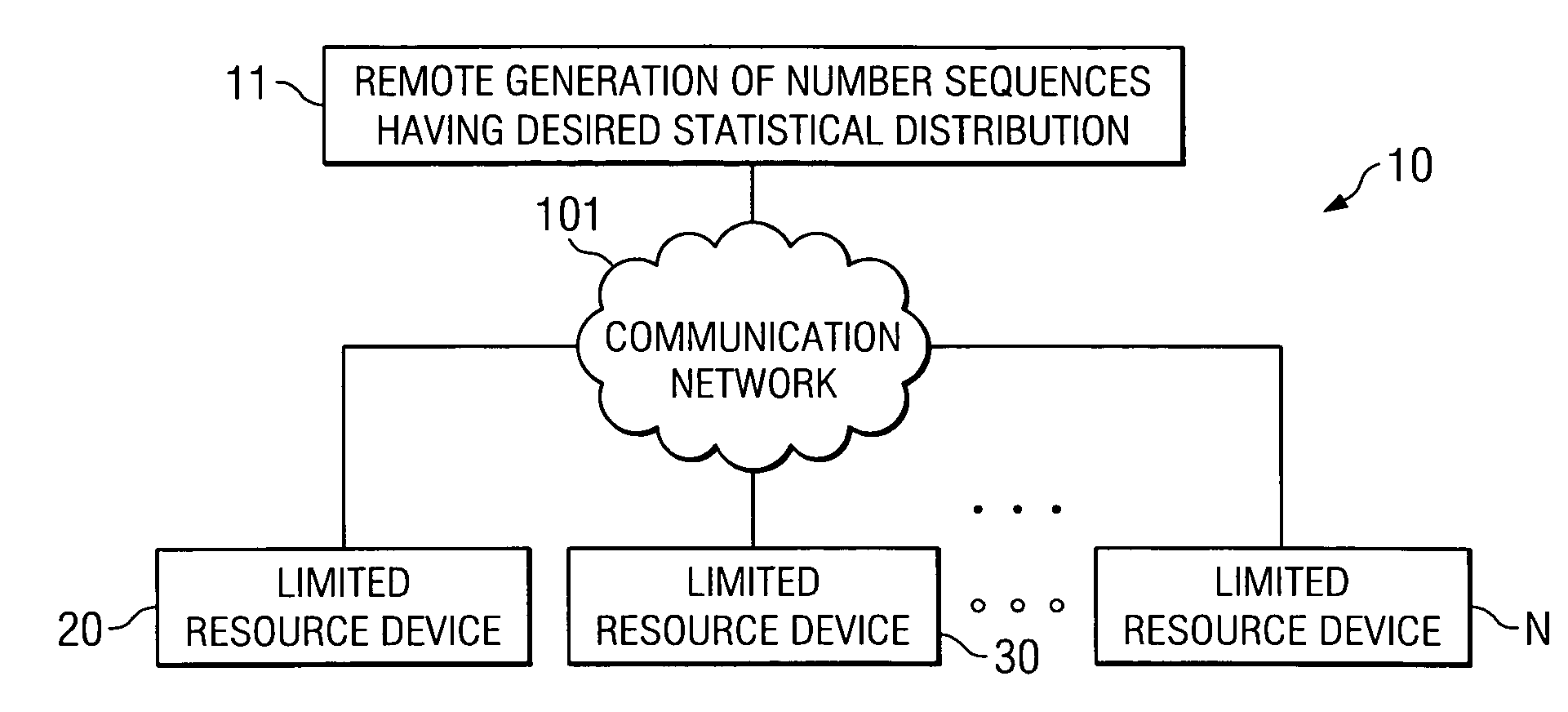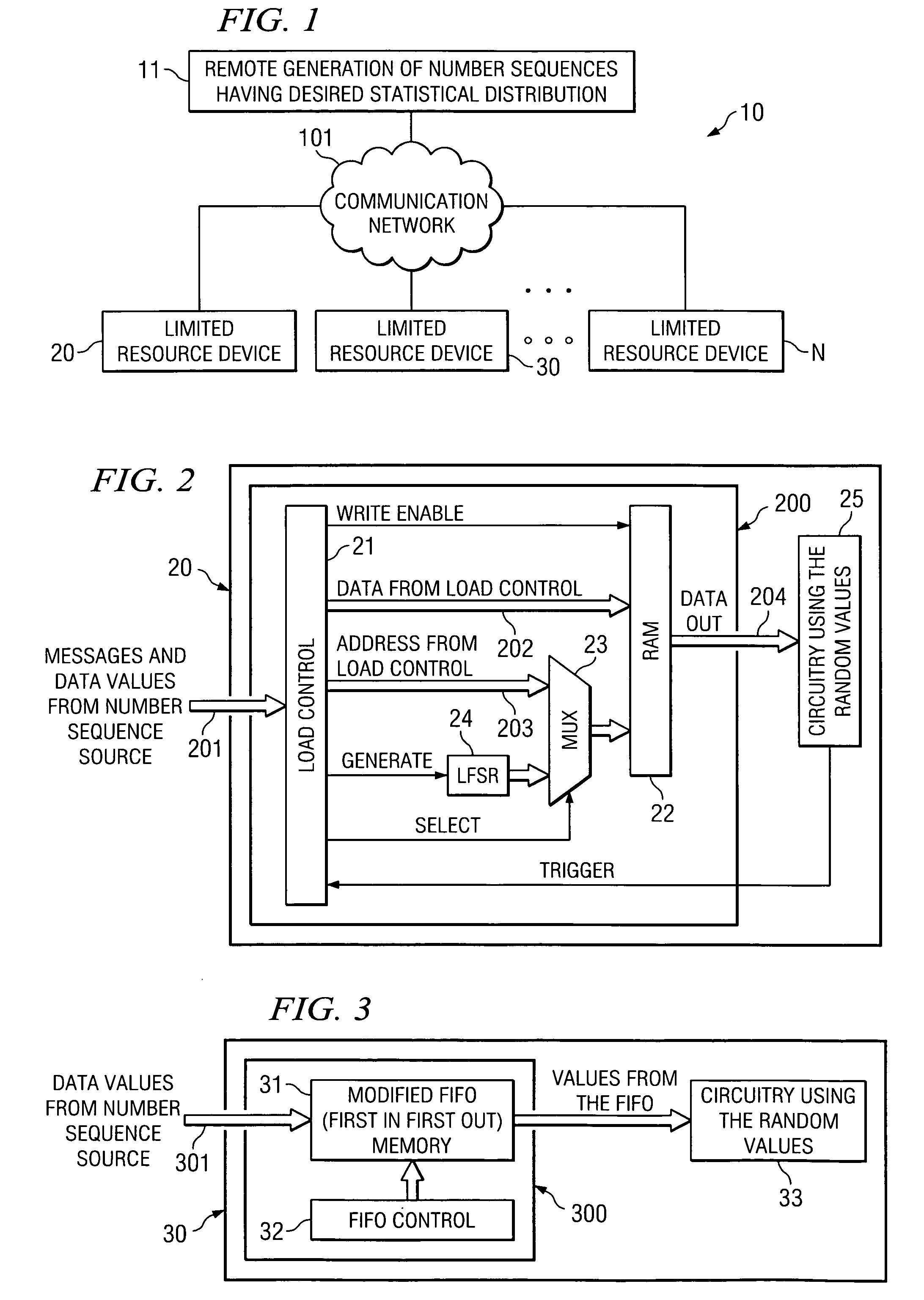Systems and methods for producing random number distributions in devices having limited processing and storage capabilities
a technology of random number distribution and processing and storage capacity, applied in the field of random number distribution generation, can solve the problems of heavy computational ability, insufficient prbs's, and inapplicability to devices
- Summary
- Abstract
- Description
- Claims
- Application Information
AI Technical Summary
Problems solved by technology
Method used
Image
Examples
embodiment 200
[0010]FIG. 2, shows embodiment 200 illustrating circuitry of limited resource device 20 having a limited amount of memory, such as RAM memory 22. Memory 22 could, for example, be registers or any other type of memory desired. Messages and data values from remote number sequence source 11 (FIG. 1) are input over path 201 to load control 21. Load control 21 then instructs MUX 23 (select input) to accept addresses 203 and to direct those addresses to RAM 22. Under control of write enable, the information coming from remote generator 11 is loaded into RAM at the address locations identified on path 203. When the data is loaded, MUX 23, under the control of the select input, is switched such that MUX 23 is connected to an address selection mechanism that is random, or Pseudo random. One such device that can be used as a pseudorandom generator is a linear feedback shift register, such as (LFSR) 24.
[0011] The LFSR is a good choice because it works well on a limited processing environment, ...
embodiment 30
[0016]FIG. 3 shows circuitry 300 for use in embodiment 30 where the numbers arriving from the external source, in this case remote generator 11, have a given distribution that further processing within device 30 is not required as it was with respect to device 20. In such a situation a memory having FIFO characteristics, such as FIFO 31, is used to receive data via 301 from remote generation source 11. When the bits pass through FIFO 31 they go directly to the circuitry that is using the random values, such as circuitry 33. In the embodiment of FIG. 3 random values are used directly from remote generation 11 without the pseudo randomness added by LFSR 24 as discussed above with respect to FIG. 2.
[0017] Note that as long as the average rate of consumption of the user (device 33) is balanced by the average rate of arrival of new values in messages from remote generation 11, the size of the FIFO need only be large enough to hold the entries in one message give or take a few entries for...
PUM
 Login to View More
Login to View More Abstract
Description
Claims
Application Information
 Login to View More
Login to View More - R&D
- Intellectual Property
- Life Sciences
- Materials
- Tech Scout
- Unparalleled Data Quality
- Higher Quality Content
- 60% Fewer Hallucinations
Browse by: Latest US Patents, China's latest patents, Technical Efficacy Thesaurus, Application Domain, Technology Topic, Popular Technical Reports.
© 2025 PatSnap. All rights reserved.Legal|Privacy policy|Modern Slavery Act Transparency Statement|Sitemap|About US| Contact US: help@patsnap.com


